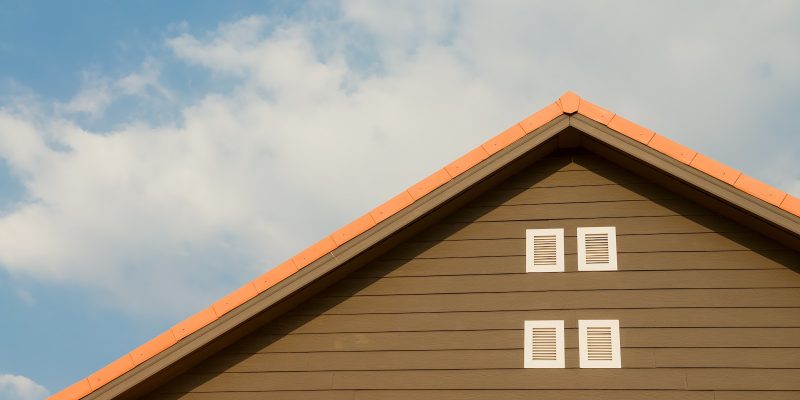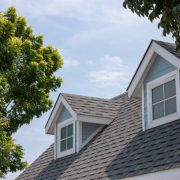Hey there, homeowner! If you’re reading this, chances are you’ve experienced the dreaded “drip, drip, drip” that no one wants to hear: roof leaks. Yeah, we get it, nothing ruins a cozy evening at home quite like a mini indoor waterfall, right?
Now, before we dive into the nitty-gritty, let’s get one thing straight—a quality roof is an important component of any building.
Weather Damage
Heavy Rain
Ah, rain. It’s great for your garden but not so much for a leaky roof. Heavy rain can test the limits of your roof’s water-resistant barrier. Over time, even the tiniest cracks can become highways for water, leading straight into your home.
So what to do? Regular maintenance is key. Check for any weak spots on your roof that might give in to heavy rain, and make sure to reinforce them.
Snow and Ice
If you live in an area with harsh winter conditions, listen up. Snow and ice can build up on your roof, and when they melt, guess where that water is going? Yup, straight through any available opening.
Proper insulation and a watertight barrier can help prevent these leaks. It’s crucial to remove any excess snow or ice after a storm safely, which might be a job best left to roofing experts.
Wind Damage
Heavy winds are no joke. They can lift roof material, creating pockets where water can seep in when it rains next. If your area is prone to heavy winds, consider getting roofing material that can withstand such conditions.
Secure loose shingles, tiles, or whatever material you have up there to ensure it stays put even during the harshest weather conditions.
Prevention Strategies
We’ve covered a lot of ground here, but prevention really is better than a cure. Scheduling regular roof inspections, especially before and after heavy storm seasons, can save you thousands of dollars in costly repairs.
Poor Roof Installation
Common Mistakes in Installation
You’d think something as crucial as a roof would be installed with the utmost care, right? Unfortunately, not always. Poor roof installation is like the original sin of roofing problems, it just keeps causing issues down the line.
Whether it’s improper sealing, incorrect overlapping of roofing material, or even using the wrong nails, these mistakes can make your roof vulnerable to leaks.
Prevention Through Quality Workmanship
So, how do you avoid this pitfall? It starts at the beginning—with proper installation by a professional roofing company. Don’t just settle for the cheapest quote.
Do your homework, ask for references, and make sure you’re hiring experienced roofing contractors who know their stuff. Quality workmanship might cost more upfront, but it can save you a ton in costly repairs down the road.
Age and Wear
Aging Process
Let’s face it, nothing lasts forever—not even your trusty roof. Over time, roofing materials start to show their age, becoming less effective at keeping the elements at bay. It’s like those old jeans you love; they might still look okay, but they’re not holding up like they used to.
Keeping Up with Maintenance
You might be thinking, “Well, how do I fight age?” Regular maintenance is your best friend here. Get frequent roof inspections, particularly if your roof is over 20 years old. Roofing experts can identify problem areas and take necessary action before a small issue turns into a full-blown leak.
When to Consider Replacement
At some point, patching up your old roof just won’t cut it anymore. If you find yourself constantly dealing with leaks, it might be time for a complete roof replacement. It’s a big investment, but it’s one that will give you peace of mind and, ultimately, a safer, leak-free home.
Clogged Gutters and Downspouts
The Unseen Culprit
You might not think of gutters and downspouts as part of your roof, but they play a crucial role in directing water away from your home. When they’re clogged with leaves, twigs, or debris, water can’t flow freely.
And guess what happens next? Yep, that water has to go somewhere, and unfortunately, it might just find its way back onto your roof.
How Clogs Lead to Leaks
A clogged gutter can cause water to back up, overflow, and then pool on your roof. If this water stands for too long, it starts seeping through the roofing material, leading to those dreaded wet spots, mold growth, and even water damage. It’s not just a minor annoyance; it can lead to some seriously costly repairs.
Gutter Maintenance is Key
To prevent this, make sure to regularly clean your gutters and downspouts, especially after heavy storms and during the fall when leaves are dropping like it’s hot. You should also consider installing gutter guards to minimize the amount of debris that can get in.
Roof Vents and Flashing
Role of Vents and Flashing in Leaks
Vents help to keep your attic’s air flowing, while flashing acts as a watertight barrier where different roof features meet, like around chimneys or skylights.
If either of these components is damaged, poorly installed, or aging, they become vulnerable points for leaks. Even a small crack around the flashing can invite water in during a heavy storm, leading to mold growth and water damage.
Maintenance and Inspection
Regular roof inspections should include a close look at your vents and flashing. Are they rusted? Cracked? Loose? Addressing these issues early can prevent bigger problems down the line. Consider having them inspected at least once a year by roofing experts who know what they’re looking for.
Cost of Neglect
Ignoring your vents and flashing can be a costly mistake. Water entering through these weak points can cause excess moisture in your attic, contributing to structural damage and a host of other issues that could end up costing you thousands of dollars in repairs.
Tree Damage
When Branches Become Battering Rams
Heavy winds or storms can cause tree branches to break off and land on your roof. Even without storms, overhanging branches can rub against roofing materials, causing wear and tear.
This friction can degrade the water-resistant barrier of your roof over time, making it more susceptible to leaks. And let’s not forget the risk of a whole tree falling onto your home, causing extensive structural damage and sky-high repair bills.
Preventative Measures
The solution? Keep those trees trimmed and at a safe distance from your roof. It’s advisable to cut any branches that are within six feet of your house.
This will not only reduce the risk of branches falling onto the roof but also limit the amount of leaves that can clog your gutters. A win-win!
Animals and Pests
Chewing, Scratching, and Nests
Certain critters have a knack for chewing through roofing material or even pulling it apart for their nests. Birds might seem harmless, but their nests can block gutters and downspouts, causing water to pool and eventually leak through your roof.
Raccoons and squirrels? They can tear shingles and chew through roof vents, leaving you with wet spots and potential water damage.
How to Spot the Signs
If you’re hearing mysterious sounds in your attic, seeing droppings, or noticing patches of torn shingles, you likely have an animal issue. Don’t underestimate these signs. Time to call in the experts for an inspection and possible roof repairs.
Animal-Proofing Your Roof
Consider installing mesh covers over your roof vents and sealing off any open areas under your eaves. It’s also a good idea to schedule regular roof inspections to ensure these small but harmful intruders haven’t settled in.
Being proactive with animal-proofing measures can save you from costly repairs and excess moisture issues.
Conclusion: Don’t Let a Leak Rain on Your Parade
Keeping an eye out for these issues and acting proactively can save you not just thousands of dollars in costly repairs, but also give you peace of mind. After all, no one likes the sight of water stains on the ceiling or the sound of dripping water when it rains.
The key takeaway here? Regular maintenance and inspections by roofing experts are your best bets for a watertight, durable roof. If you’re unsure about anything, it’s always better to consult a professional roofing company for advice and repairs.
We hope this article sheds light on the ever-vexing problem of roof leaks and arms you with the knowledge to keep your home safe, dry, and leak-free.




















